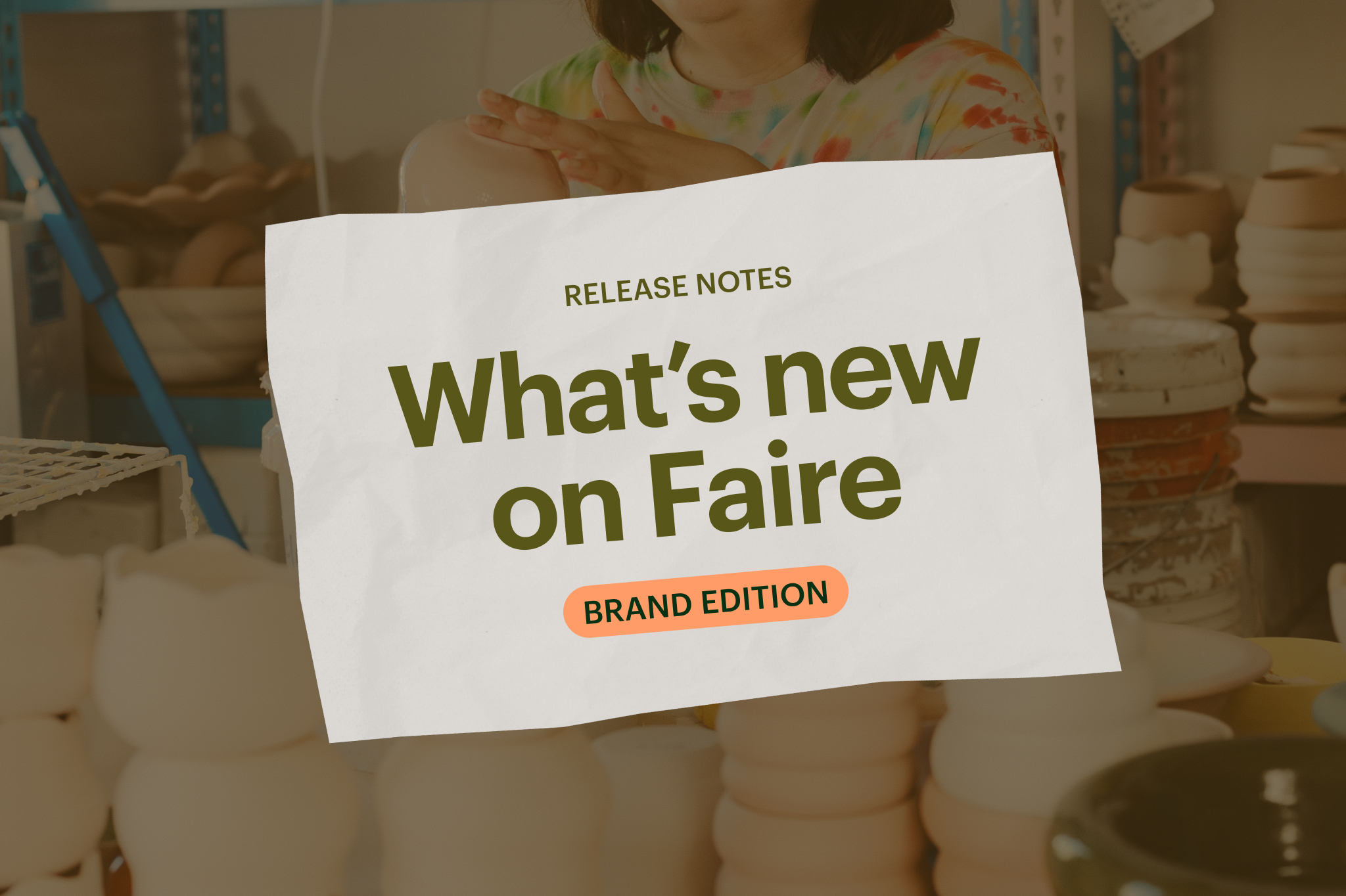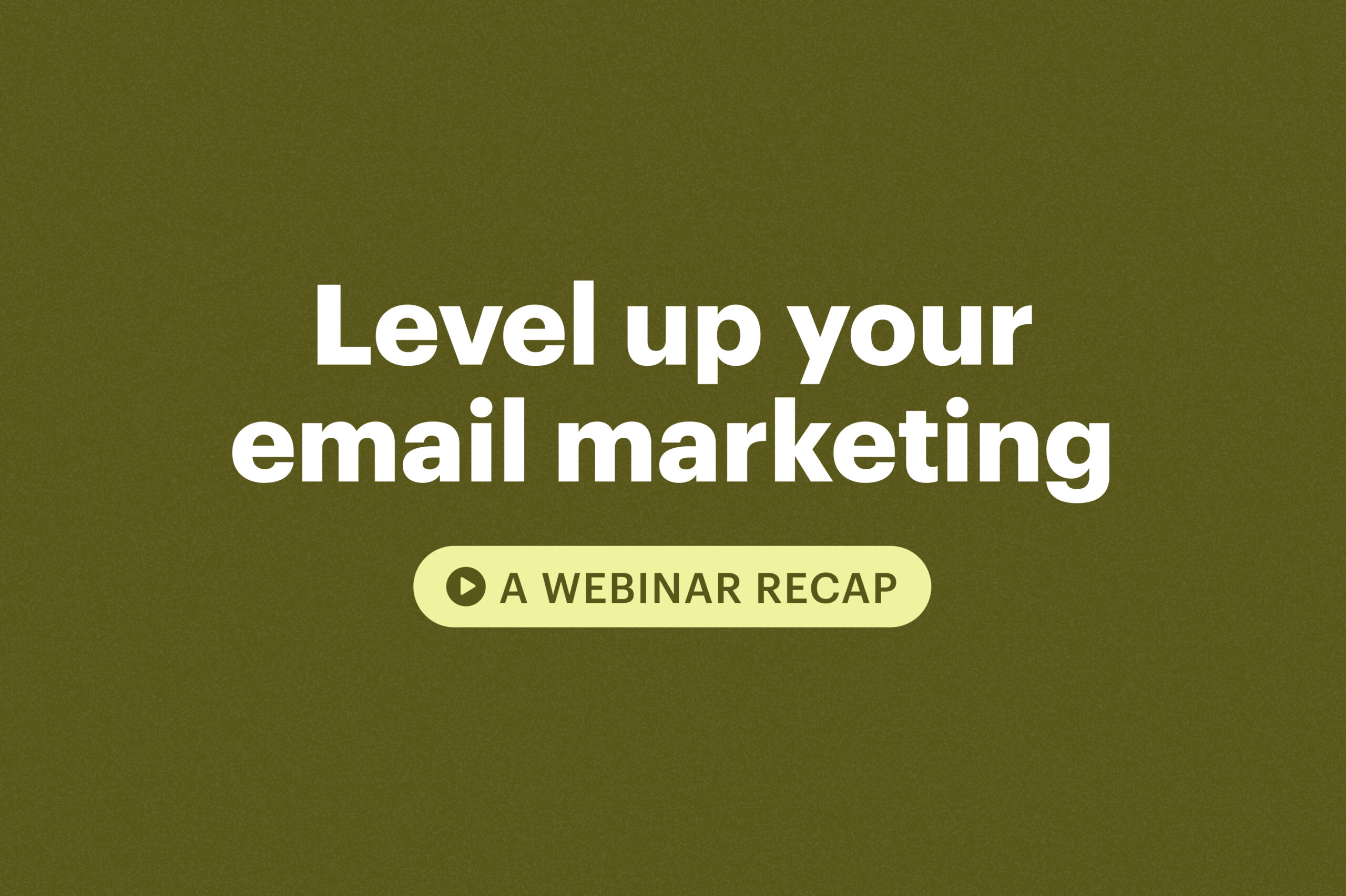

You might assume that most people shop online, but that’s far from the truth. In fact, in-store purchases made up 84.5% of total retail sales in the United States in the first half of 2024. Building community and interacting with shoppers is still really important for brick-and-mortar retailers, and new technology has made this even easier. Enter email marketing for retail.
It’s more important than ever for retailers to collect shopper email addresses. Having that direct line of communication with customers helps you stay front-of-mind and build lasting relationships. This is invaluable in today’s fiercely competitive retail landscape. More than that, shoppers expect you to email them. One study revealed that 62% of shoppers prefer to receive communication from retail brands via email—higher than any other channel.
You may be wondering how to get shoppers to give you their email addresses but also how to write a marketing email and what tips for email marketing you should employ.
Luckily, you’re in the right place. We’ve compiled a handy guide to demystify email marketing and help you take your retail business to the next level.
What is email marketing?
You likely already know what email marketing is because you’re a consumer yourself. One look at your inbox proves that it’s a great way to reach customers with relevant, personalized messaging. In short, email marketing for retail involves sending messages to both prospective and current customers about your store, services, and/or products.
What you may not know is that it’s also surprisingly powerful: The ROI on email marketing is $36 for every $1 spent. Sending newsletters to your subscribers means that you control the content and distribution entirely, which can keep your brand strong and your rate of return high. Perhaps most importantly, it’s a channel that will likely stay strong since mail users are growing and expected to hit 4.73 billion by 2026.
Email marketing is not just an effective strategy that keeps customers engaged between purchases, it’s also a way to encourage customer loyalty over time with exclusive offers, first looks at new products, and surprise-and-delight emails.
How to build a list of subscribers
Before you can send out any emails, you need a list of email addresses (also known as subscribers). Here are a few ways to encourage your shoppers to sign up for your newsletter:
- Ask at the checkout: If someone is actively shopping in your store, they already have a very high brand interest, and, therefore, there’s a strong possibility that they’ll want to hear more from you. Ask if they’d like to join your mailing list for exclusive deals and first dibs on new products.
- Offer an incentive: Collect email addresses in exchange for something valuable. This might be 10% off a shopper’s next purchase, special offers for email subscribers, early-bird opportunities, or a free gift.
- Host an in-store event: Get shoppers together at a real-life, physical event, bring out a sign-up sheet, and take the opportunity to collect email addresses from people who have a very positive view of your store.
- Promote a loyalty program: Encourage shoppers to join a loyalty program where they can unlock benefits the more they buy. Ask for their email address to keep them updated on their loyalty status.
- Run a referral program: Ask shoppers to refer your store to their friends and family to receive a special offer or incentive. Collect their email addresses when you do so to keep them in the loop.
- Add a note to in-store receipts: Get creative! Share a sign-up link on receipts, carrier bags, or product packaging.
What’s a lead magnet and how can they help your business?
As mentioned above, one of the best ways to grow your email list is to provide an incentive to your customers in exchange for their email address. Known as a lead magnet, this marketing strategy can help a retailer gain new email subscribers and customers.
Some of the most common lead magnets include coupons, free shipping, social media giveaways, free samples, and loyalty programs. E-commerce sites utilize pop-ups to promote lead magnets while brick-and-mortar stores can promote their lead magnet during checkout. Just think about how many times you have been asked to provide your email while checking out.
6 types of email that will benefit your brick-and-mortar retail store
Once you’ve started to collect email addresses, it’s time to open a line of communication. There are countless things you can try with fancy email tools, but for now, let’s keep things simple. Here are some useful emails that’ll help your business and your brand.
1. Welcome emails
First impressions are everything—and while a shopper will have had their “true” first impression in-store, your very first email will build on it. This is your chance to say hello, remind shoppers who you are, and foster the beginnings of a long-term relationship. And if you’re feeling hesitant to hit that send button, let this stat reassure you: 74.4% of customers expect a welcome email when they subscribe. So go ahead, say hi!
Some things you may want to accomplish in your initial email:
- Introduce your brand and origin story
- Show your appreciation and thank people for signing up
- Highlight what kind of emails people can expect from you
- Offer a discount or a little goodie to welcome them and start building loyalty
2. Product launch emails
Worried about launching your latest product to the sound of crickets? Email is a great way to inform existing customers that you have something new to offer them. Even better, these are people who have actively bought from you in the past or who have shown a vested interest in your store and products, so there’s a very good chance they’ll be interested in new products.
You can send a simple email to subscribers announcing the launch of a new in-store product, or you can create a launch series to drum up excitement. Again, you can offer an early-bird incentive to those on your email list or even invite them to an exclusive launch party.
3. Abandoned cart emails
Abandoned cart emails are helpful tools for businesses that sell products online. If a shopper with an account on your site places an item in their online basket but does not purchase it, an email from your business will be sent to them. They’ll be reminded of the great item they’ve forgotten and have the opportunity to buy. Abandoned cart emails have high open rates in comparison with other types of email and are instrumental in recovering lost (or forgotten) sales.
There are many reasons a shopper might have abandoned their cart. Research by Barilliance reveals that unexpected shipping costs, additional checkout hurdles (like needing to create an account), and concerns about payment security are the top three reasons. You can counter these with an abandoned cart email that reassures shoppers and gives them the confidence (and the reminder!) to finish their purchase.
Here are some ways you can spruce up your abandoned cart emails:
- Offer a discount if a shopper continues on to checkout
- Invite the shopper to come and see the product in-store
- Share similar product recommendations
- Answer FAQs about the product to tackle any nagging doubts
- Provide social proof in the form of reviews, testimonials, and shopper videos and photos
That last example might be higher effort, but it’s also high reward. By asking customers to create video testimonials, you enhance customer reviews and encourage future buyers to feel more confident in completing their purchase.
4. Special event emails
Events are a helpful tool to build relationships with shoppers and grow local visibility for your store. And you can collect customer email addresses while you’re at it. As well as sending event invites to existing subscribers, you can set up a “subscribe stand” at your event where you can encourage more people to sign up for your email list.
5. Newsletters
Keep shoppers in the loop with regular email newsletters. Think of these as letters to your best customers to keep an open line of communication. Newsletters are a great way to stay front-of-mind and continue to deliver value even when a shopper hasn’t bought from you in a while. When they are ready to buy, you’ll be the first store they run to.
There are plenty of fun things you can do with your newsletter—here’s some inspiration:
- Share your latest content and resources
- Interview makers and local businesses
- Go behind the scenes of your business
- Run giveaways and competitions
- Spotlight a “product of the month”
- Run flash sales
6. Product recommendation emails
Personalizing email marketing for retail is one of the easiest and most effective actions you can take. Seventy-one percent of customers expect personalization, and 76% get frustrated if it’s missing. Plus, companies that effectively use personalization see 40% more revenue.
Once a shopper has signed up for your list, you can ask them to choose some favorite products in your welcome email or send them a quick questionnaire to find out more about their likes and interests. This is a win-win for everyone—your shoppers will only receive emails that are relevant to their interests, and you’ll sell more products.
Tips for email marketing
When you start planning your store’s first emails, keep these pointers in mind.
Use premade templates
Regardless of the types of emails you send, choosing a compelling, easy-to-read, and mobile-friendly layout for your campaigns is important. Depending on your email provider, you may be able to save previous email campaigns or create your own templates. Finding a consistent template will not only save you time in the future but also help create a cohesive look and feel for branding your business.
Make sure your emails are mobile-friendly
In the United States, more than three-quarters of all adults shop on their phones, which means mobile-friendly marketing emails are vital. To ensure your emails are mobile-friendly, stick to easy-to-navigate layouts, clear and visible buttons, and easy-to-read fonts. Short videos are an especially engaging way to share interesting details about your store and products, and even just using an animated GIF within an email increases ROI by 105%.
Lead with a compelling subject line
Now’s not the time to be vague—instead, showcase the unique products you carry or call attention to a particular selling point. For example, an email alerting customers to exciting new products with the subject line, “New eco-friendly sandalwood candles now available” is much more compelling than, “New products now available.”
Use a clear call to action (CTA)
This is a phrase or sentence that clearly states the action you want a customer to take after reading your email. Your CTA should be directly tied to the goal of your email, whether that’s to come into the store and shop for new products or to take advantage of a discount offer. For example, a CTA stating, “Click here to receive 10% off” instructs the reader what to do next. Calls to action should always involve a clickable button or link that directs the buyer to your website.
Automate where possible
Automating recurring sends like welcome emails for new subscribers is an easy way to save yourself time with email marketing (freeing you up to tackle other essential tasks). Many email providers offer automation tools with their business plans so you can schedule automatic emails based on user activity. For example, you can create a welcome email campaign that is automatically sent to every new subscriber or one that’s triggered every time a customer abandons their cart.
Understand your audience
Understanding your email marketing audience makes all the difference for a successful retail email marketing strategy. You can collect data via surveys and feedback forms and analyze demographic and purchase history to find out what your customers respond to best. Most email marketing platforms allow for segmented audiences, which means that retailers can send specific messaging to different segments of users. So if you know that some of your customers love funny greeting cards, you can send emails featuring those products only to them.
Test, test, test
To find out which emails resonate best with customers—and how things like subject lines, CTAs, segmentation, and personalization really pan out—it can be helpful to test different versions with slight variations. This is called A/B testing. According to recent research by Litmus, brands that often include A/B testing generate an ROI of 42:1 versus 23:1 for those that never test.
Track your results
When it comes to an effective marketing strategy, it’s important to keep track of how your emails are performing. Most email marketing providers allow you to view basic information about your email performance. Start by checking to see how many people are opening your emails and clicking your call-to-action button. Tracking clicks and open rates will help you determine which of your emails are most effective and enable you to tailor future marketing emails accordingly. It also allows you to perform tests to further improve your strategy.
5 email marketing platforms for retailers
Here are our recommendations for the best email marketing platforms for retailers. You can try out each of these products for free and upgrade to a paid subscription when you want to reach more customers or use more robust tools.
Intuit Mailchimp
With over 11 million users globally, this powerhouse email marketing platform is a favorite for many retailers. Because it offers custom-coded email templates, advanced segmentation, and data-driven optimization tools, this platform is a good choice for big retail businesses and small.
Klaviyo
Built for e-commerce marketing, Klaviyo prides itself as a data and marketing automation platform. It can include dynamic product recommendations to emails based on customer browsing or purchase history, predict customer attributes, and segment your audiences with the help of AI.
MailerLite
MailerLite prioritizes simplicity and accessibility, especially for small businesses. Grow your retail marketing email list with AI automation, clean design choices, and e-commerce integration.
Constant Contact
Constant Contact boasts simple and easy-to-use email marketing tools, including a spam-detection tool, which ensures your email will be read by customers and not blocked by their inbox.
Brevo (previously Sendinblue)
Brevo’s drag-and-drop editor makes it easy to design emails to match your brand and audience while personalization tools, marketing automation, and A/B testing let you optimize every email you send.
Through experimentation, careful planning, and some curiosity, you’ll develop a great email marketing strategy for your shop. Use this guide to create new relationships with your shoppers, develop your brand, and open doors for direct sales.




